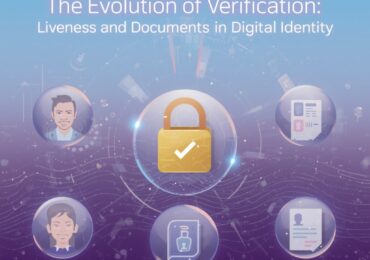In a digital-first world, proving someone is who they say they are is more important than ever. From opening a bank account to renting a car, identity verification has become a critical step. Vouched is one of the many platforms helping to drive innovation in this space.

The Shift From Manual To Smart Verification
In the past, verifying someone’s identity often meant checking a physical ID in person. That process was slow, error-prone, and vulnerable to fraud. Today, technology makes this faster and more secure with a blend of automation and intelligence.
Digital identity verification uses a mix of facial recognition, document scanning, and behavior analysis. By combining these tools, platforms can quickly detect fake IDs or fraudulent users. The result is a smoother experience for real users and more protection against bad actors.
The rise of mobile apps and online services created demand for remote verification. As a result, traditional methods had to evolve. Smart, AI-driven solutions are now becoming the norm.
Liveness Detection: Making Sure It’s Really You
Liveness detection ensures that the person verifying their identity is physically present, not just a photo or video. It checks for real human movement like blinking, head turns, or facial expressions. This simple step helps stop spoofing attempts.
Advanced systems use AI to analyze subtle cues like skin texture or depth to confirm someone is live. They can even spot whether a video is pre-recorded or manipulated using deepfake technology. This layer of protection is essential as digital fraud becomes more sophisticated.
Some systems also request random actions, like blinking twice or smiling, to prove liveness. These unpredictable prompts make it hard for attackers to fake their way through. The goal is to create a fast but foolproof check for authenticity.
Document Scanning: More Than Just A Photo
Scanning an ID is no longer about simply reading text or checking an expiration date. Modern systems now analyze visual features such as holograms, watermarks, and microtext to ensure authenticity. These features are tough to replicate, making it difficult for fraudsters to succeed.
AI tools compare the scanned document with templates from official government-issued IDs. They check layout, font, and embedded security features. This detailed inspection helps spot fakes that might fool the human eye.
Some platforms also verify data in real time by connecting to government or trusted databases. If the document doesn’t match known formats or includes suspicious edits, it gets flagged instantly. This quick response helps businesses avoid risk without delay.
Real-Time Selfie Matching: Closing The Loop
To confirm that the ID truly belongs to the person submitting it, real-time selfie matching is used. This involves capturing a live image of the user and comparing it to the photo on their ID. It’s a fast and accurate way to link a face to an identity.
AI-driven face recognition checks for consistent features such as eye distance, jaw shape, and skin tone. Even with differences in lighting or angles, modern algorithms can detect a match with high accuracy. This prevents someone from using a stolen or altered ID.
By combining selfie verification with liveness detection, platforms can ensure both the person and the ID are real and connected. This dual check is beneficial for high-stakes processes like online banking or account recovery.
Fighting Deepfakes And Spoofing
Deepfake videos and synthetic images are becoming easier to create and harder to detect. This raises the stakes for identity verification systems. That’s why companies are investing in advanced fraud detection powered by machine learning.
AI models are trained to spot telltale signs of manipulation, such as unnatural lighting, eye movement glitches, or pixel inconsistencies. These models improve over time as they learn from new types of attacks. Constant updates keep verification systems one step ahead.
When paired with document verification software and liveness detection, these systems create a strong defense. Each layer catches different types of fraud, making it harder for anyone to slip through. The result is a more secure, trustworthy user experience.
Conclusion
Digital identity verification is evolving fast to keep up with more brilliant fraud tactics. Liveness detection, document scanning, and real-time matching now work together seamlessly. Vouched and similar platforms are leading the way in making these systems reliable and secure.